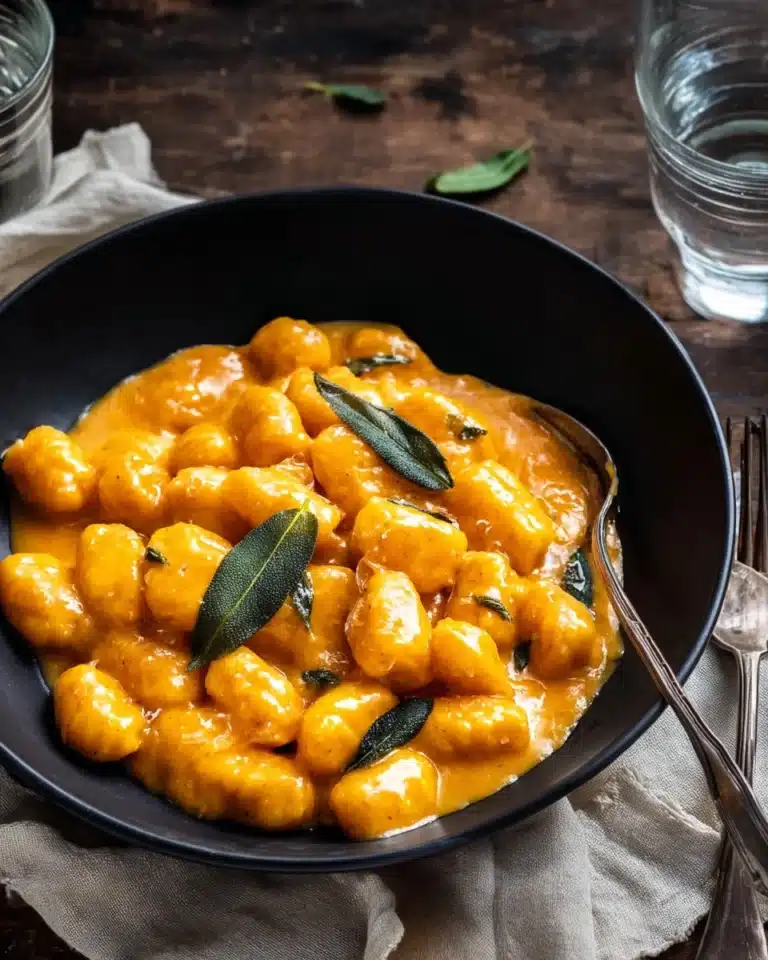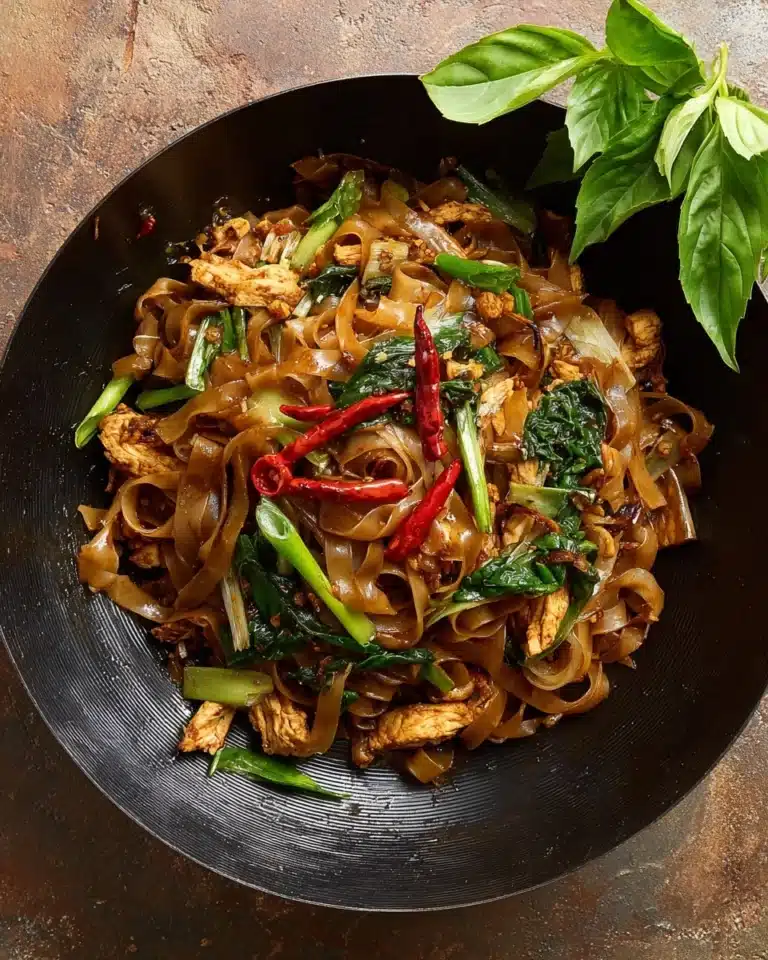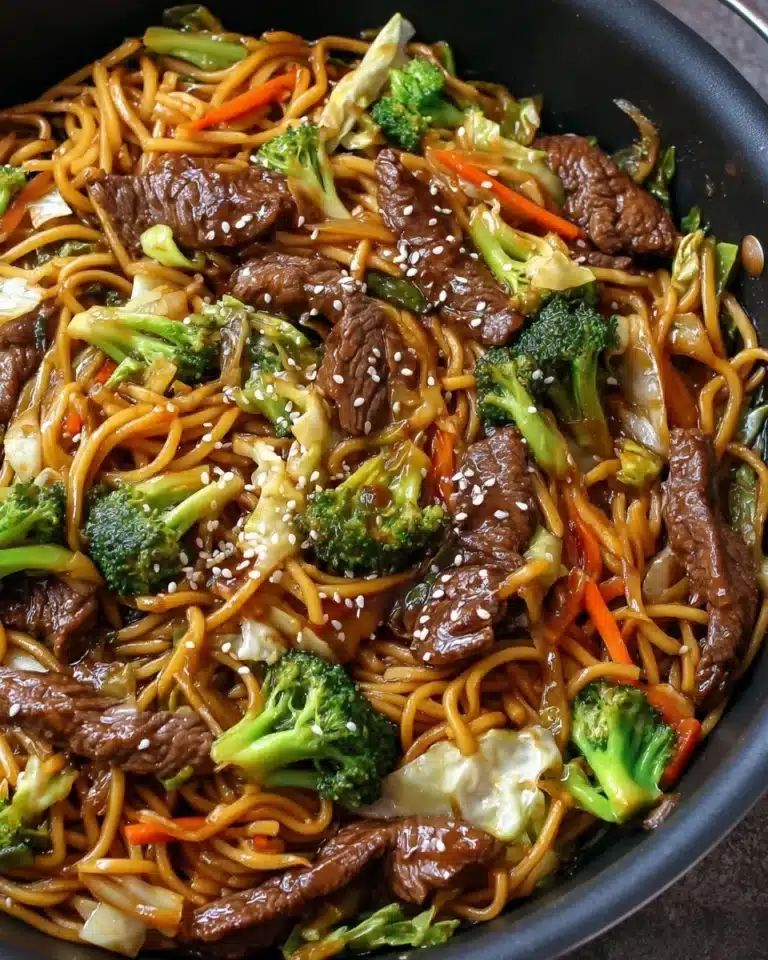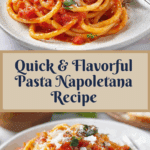If you’re craving the soul-soothing comfort of Italian cooking in under half an hour, Pasta Napoletana is your ticket to pure delight. This dish captures the essence of Naples right on your stovetop: a vibrant, garlicky tomato sauce is swirled together with perfectly cooked pasta and lush basil, then showered with parmesan. With every forkful, you’ll taste Mediterranean sunshine and the kind of simplicity that makes Italian food so unforgettable. Whether you’re looking for a quick weeknight family dinner or a cozy lunch with friends, Pasta Napoletana delivers robust nostalgia and fresh flavor in every bite.
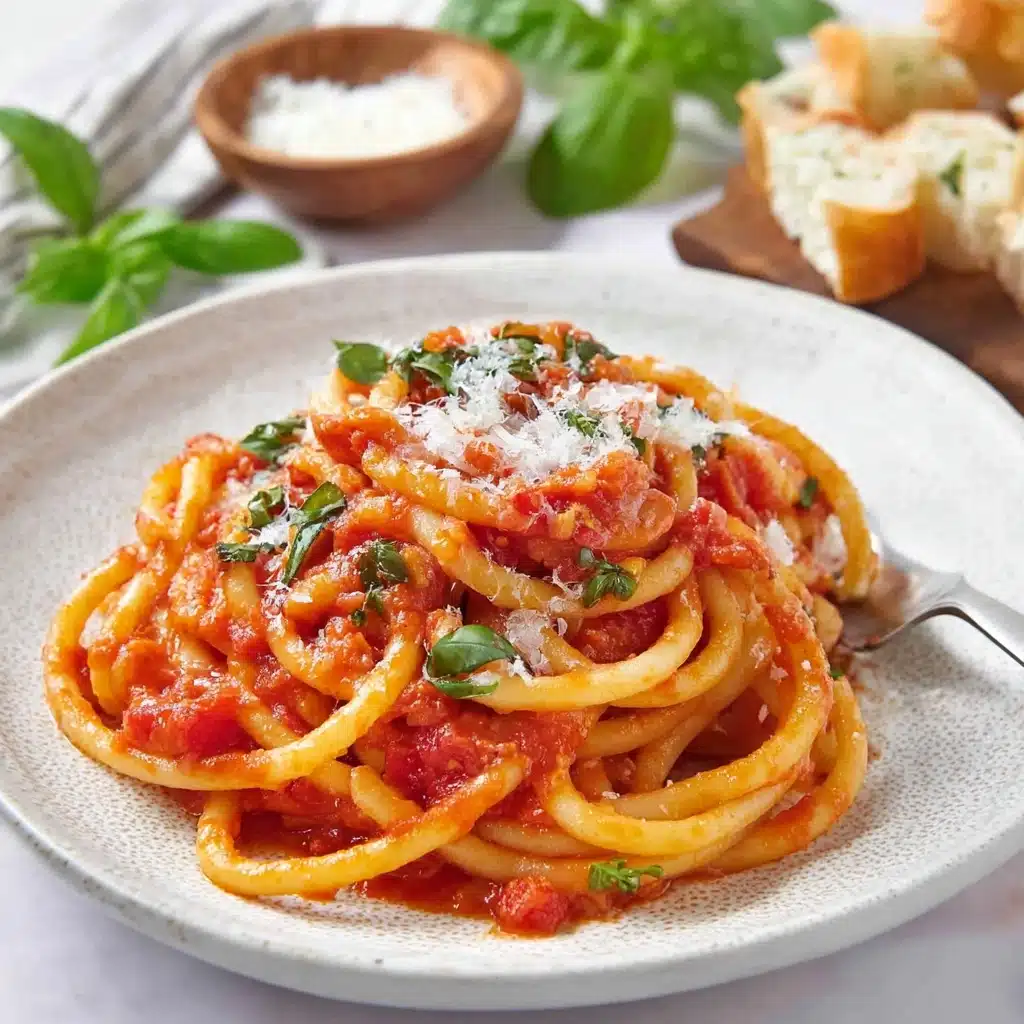
Ingredients You’ll Need
True to its Neapolitan roots, Pasta Napoletana relies on just a handful of honest ingredients, each playing a key role in building deep, authentic flavor. There’s nothing fancy here, but every element counts—choose with care, and you’ll taste the difference.
- Pasta: 8oz (220 grams) spaghetti or bucatini — classic choices that soak up sauce, though short shapes work too for a heartier feel.
- Olive oil: 1 Tbsp, or extra virgin if you have it, for a velvety base and a hint of fruitiness throughout the sauce (save a little to drizzle at the end for a real Neapolitan flourish).
- Onion: 1 medium, finely chopped; it melts into the sauce, offering gentle sweetness.
- Garlic: 2-3 cloves, minced, for that essential kiss of bold, savory aroma—don’t skip it!
- Canned tomatoes: 1 can (14oz/400g), any style (whole, diced, or cherry); they bring juiciness and sun-soaked flavor as the sauce’s foundation.
- Salt: ½ tsp fine salt (plus more to taste); highlights all the flavors and keeps your pasta water perfectly seasoned.
- Black pepper: ⅛ tsp; just enough for a gentle, warming bite.
- Basil leaves: A good handful, chopped or torn; adds gorgeous color and a breezy, unmistakable freshness to finish.
- Parmesan cheese: 3 Tbsp grated, to serve; blankets everything in irresistible, nutty richness.
How to Make Pasta Napoletana
Step 1: Start Cooking the Pasta
Get a large pot of salted water boiling—plenty of salt is key! Begin cooking your pasta about five minutes after starting the sauce. Cook according to the package instructions until al dente, and don’t forget to scoop out half a cup of that starchy water before you drain. This little treasure gives your Pasta Napoletana its supple, glossy finish.
Step 2: Sauté Onion and Garlic
In a generous pan, heat your olive oil until it shimmers with promise, then add your finely chopped onion. Let it cook over medium heat for 5-6 minutes until soft and almost melting—patience here brings a gentle sweetness to your sauce. Stir in the garlic and let its scent bloom for another couple of minutes. This is where the kitchen really starts to smell like southern Italy.
Step 3: Build the Napoletana Sauce
Time for the tomatoes: pour them in and sprinkle with salt and that gentle twist of black pepper. Give everything a good stir, breaking whole tomatoes up with your spoon if that’s what you’re using. Let the sauce bubble away on medium heat for about 15 minutes. It’ll thicken, deepen, and fill the house with anticipation. Stir occasionally, tasting near the end and adjusting your seasoning if needed.
Step 4: Combine Pasta and Sauce
When your sauce is ready, add the drained pasta directly into the pan. Toss in the fresh basil and start turning everything together until glossy and gorgeous. Pour in a splash of reserved pasta water if you want it a little looser, letting the starches marry sauce and spaghetti. This is the moment when Pasta Napoletana becomes more than the sum of its parts!
Step 5: Serve the Pasta Napoletana
Spoon generous helpings onto plates, then sprinkle with grated parmesan and more torn basil. A fresh grind of black pepper and a confident drizzle of good olive oil turns this into a restaurant-worthy bowl in just 25 minutes. Dig in while it’s piping hot!
How to Serve Pasta Napoletana
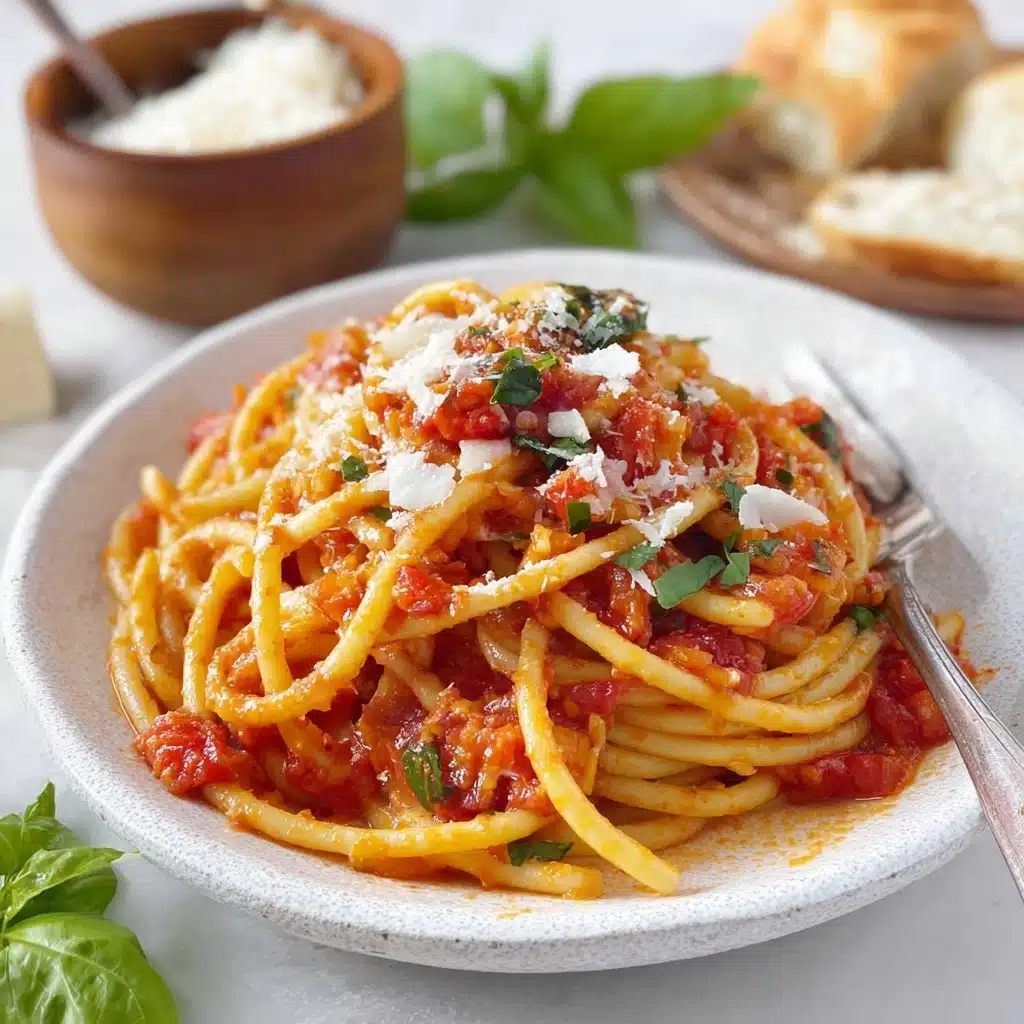
Garnishes
A handful of fresh basil leaves torn over the top instantly brightens the flavors, while freshly grated parmesan melts into each strand. Try finishing with a drizzle of quality extra virgin olive oil or even a few thinly shaved curls of parmesan for a bit of drama. Cracked black pepper never hurts either—just that final spicy kick.
Side Dishes
Pasta Napoletana is a star on its own, but to make it a full meal, pair it with a crisp green salad tossed in simple vinaigrette to balance the rich sauce, or a warm, crusty loaf of Italian bread for sopping up every last bit. For something extra, roasted vegetables or sautéed greens play beautifully next to the pasta’s sweet tomato base.
Creative Ways to Present
If you’re entertaining, twirl the pasta into elegant nests and line them across a serving platter, or use individual bowls for a cozy night in. For lunchboxes, cool leftovers down and pack with extra basil and parmesan. Even a sprinkle of toasted pine nuts, capers, or olives over the top can add bursts of flavor and color, making your Pasta Napoletana look as joyful as it tastes.
Make Ahead and Storage
Storing Leftovers
Store any leftover Pasta Napoletana in an airtight container in the refrigerator for up to 3 days. The flavors continue to mingle and develop—in fact, the next day’s forkful can be even more delicious. If possible, keep extra parmesan and basil separate to sprinkle fresh after reheating.
Freezing
While tomato-based pasta sauces freeze beautifully, pasta itself can get a bit soft after thawing. If you want to freeze, store the sauce alone in a freezer-safe container or zip-top bag. It will keep its punchy flavor and smooth texture for up to 3 months. When you’re ready to eat, cook fresh pasta and toss with the reheated sauce for just-made taste.
Reheating
To reheat, place Pasta Napoletana in a pan over low-medium heat with a splash of water or a drizzle of olive oil to keep it silky. Stir gently until warmed through. The microwave works in a pinch—just cover loosely and heat in short bursts, stirring in between to distribute the heat evenly.
FAQs
Can I use fresh tomatoes instead of canned?
Absolutely! Use about 1 pound of ripe, chopped tomatoes in place of canned. Just remember to cook them down a bit longer to concentrate their flavors and draw out some of the excess liquid for robust Pasta Napoletana sauce.
How can I make Pasta Napoletana vegan?
It’s easy—just skip the parmesan or use a plant-based alternative. The sauce itself is naturally vegan, and a sprinkle of nutritional yeast makes a fantastic replacement for traditional cheese.
Is it possible to add protein to Pasta Napoletana?
Definitely. Toss in drained canned tuna, anchovies, or even chickpeas for a hearty twist. Just add any of these options when the onions are translucent and proceed as normal—the flavors meld wonderfully with the classic sauce.
Which pasta shapes work best for this recipe?
Spaghetti and bucatini are traditional for Pasta Napoletana, thanks to their ability to soak up and twirl the sauce. But any shape you love—penne, rigatoni, fusilli—will do the trick and catch plenty of that rich, simple tomato goodness.
Can I make the sauce ahead?
Yes! The Napoletana sauce can be made a day or two in advance and stored in the fridge. This not only saves time, but the flavors develop even more depth as they sit. When mealtime comes, just cook your pasta and toss it all together for a quick, stress-free meal.
Final Thoughts
There’s just something about sharing a bowl of Pasta Napoletana that feels like a warm hug from Italy. If you’ve never tried making this at home, now’s the perfect time. With a few pantry staples and a touch of love, you can bring a taste of Naples straight to your table—one twirl at a time. Give it a go, and let your kitchen fill with joy!
Print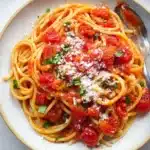
Pasta Napoletana Recipe
- Prep Time: 10 minutes
- Cook Time: 22 minutes
- Total Time: 32 minutes
- Yield: 4 servings
- Category: Main Course
- Method: Stovetop
- Cuisine: Italian
- Diet: Vegetarian
Description
A classic Italian pasta dish, Pasta Napoletana features a rich and flavorful tomato sauce served with spaghetti or bucatini, topped with fresh basil and grated parmesan. This recipe is easy to make and perfect for a quick and satisfying meal.
Ingredients
Pasta
- 8oz (220 grams) spaghetti or bucatini (short pasta is fine too)
Napoletana Sauce
- 1 Tbsp olive oil or extra virgin olive oil, plus more for drizzling
- 1 medium-sized onion, finely chopped
- 2–3 garlic cloves, minced
- 1 can (14oz/400 grams) tomatoes (whole, diced or cherry tomatoes)
- ½ tsp fine salt, plus more to taste
- ⅛ tsp black pepper
- 1 handful of basil leaves, chopped or torn
- 3 Tbsp grated parmesan, to serve
Instructions
- Pasta – Bring a large pot of salted water to the boil. Start cooking the pasta about 5 minutes after you start making the sauce.
- Napoletana Sauce – Heat the olive oil in a large pan and when it starts shimmering add the diced onion. Cook over medium heat until soft and translucent, it will take 5-6 minutes.
Cook pasta per packet instructions until al dente. Reserve ½ cup of pasta cooking water, then drain pasta.
Stir in the minced garlic and cook for 2 minutes until fragrant.
Add the tomatoes, salt and few twists of black pepper and give a good stir. Let it cook over medium heat for about 15 minutes until it’s slightly reduced. Stir occasionally, and if you use whole tomatoes, break them with the back of a spoon.
When the sauce is ready, taste and adjust the seasoning according to your liking.
Add the drained pasta to the pan along with the fresh basil and toss until well combined. Add a touch of reserved starchy water to make the pasta juicier and moist.
Serve with freshly grated parmesan cheese and more torn fresh basil leaves. Freshly ground black pepper and a drizzle of extra virgin olive oil to serve are optional. Enjoy!
Notes
- ADDITIONAL INGREDIENTS: you can add a handful of whole or chopped olives, canned tuna (previously drained), a few anchovies or 1 Tbsp of capers. Add one of these ingredients (or also a couple of them) when the onion is translucent. Toss them with the onion for a couple of minutes, then add the canned tomatoes according to the recipe.
Nutrition
- Serving Size: 1 serving
- Calories: 324 kcal
- Sugar: 6g
- Sodium: 680mg
- Fat: 8g
- Saturated Fat: 2g
- Unsaturated Fat: 5g
- Trans Fat: 0g
- Carbohydrates: 52g
- Fiber: 3g
- Protein: 10g
- Cholesterol: 4mg

